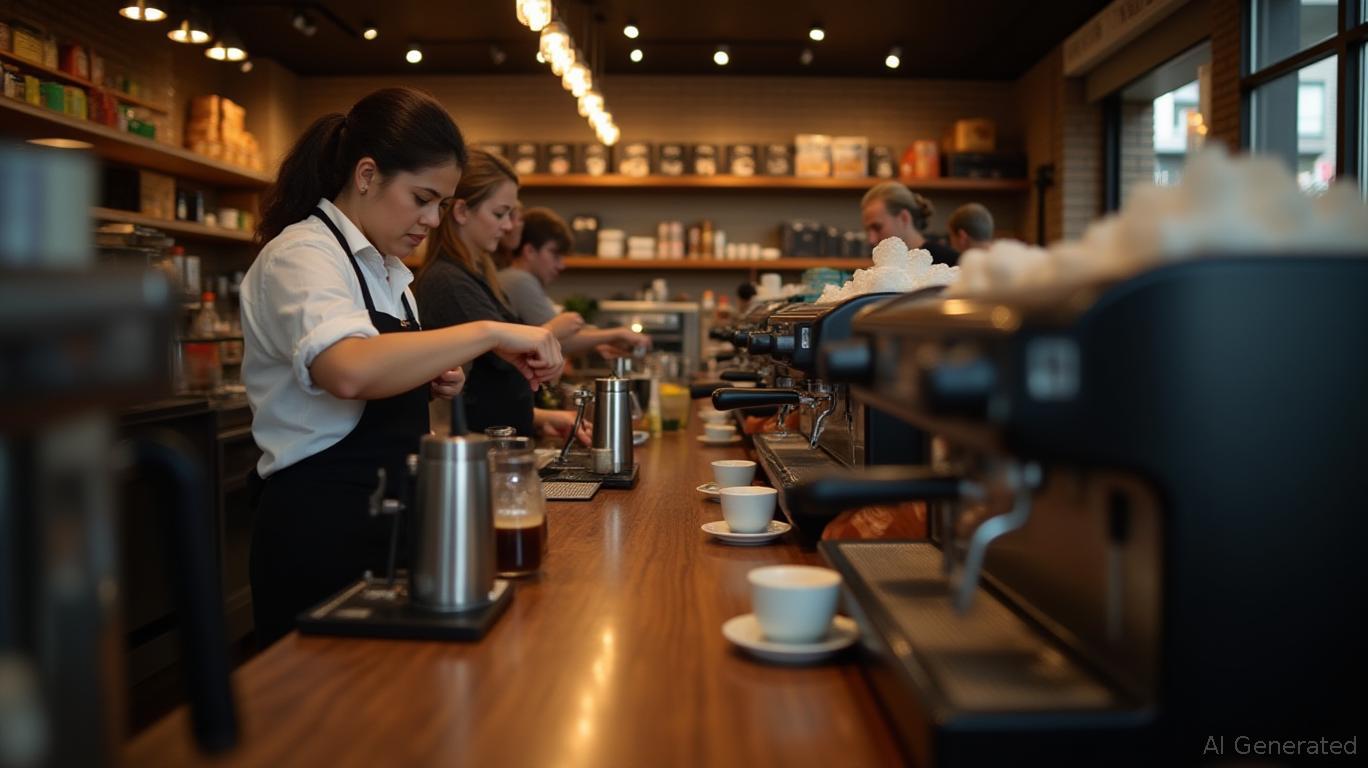Starbucks' Strategic Pivot: Can Authenticity and Efficiency Ignite Growth?
The coffee giant's journey under CEO Brian Niccol has been marked by a bold pivot: a return to its roots as a purveyor of premium coffee experiences. Yet, the financials for fiscal 2025 Q2 reveal a complex picture of progress and peril. Starbucks' “Back to Starbucks” strategy aims to reignite growth through brand authenticity and operational discipline. The question now is whether these moves can overcome margin pressures and transaction declines in its core markets.
The Strategy: A Return to Coffee's Core
Niccol's vision centers on reclaiming Starbucks' identity as a destination for exceptional coffee, not just a convenience stop. This shift has involved refocusing menus on core beverages, investing in barista training, and enhancing store ambiance. The operational side includes restructuring costs—1,100 corporate roles cut—and a push to streamline global expansion.
But executing this pivot has come at a cost. Labor expenses and restructuring charges widened operating margins, with North America's margin plunging 640 basis points to 11.6%. The trade-off is clear: short-term pain for long-term brand relevance.

Financial Crossroads: Revenue Growth vs. Margin Erosion
Starbucks' revenue growth remains tepid, with consolidated net revenues up just 2% year-over-year. North America's comparable store sales fell 1%, driven by a 4% drop in transactions—the lifeblood of any retail business. This decline underscores a critical challenge: customers are visiting less frequently, even as average ticket prices rise.
The international segment shows mixed results. China, a critical growth lever, stagnated due to weak transaction growth, while the U.K. benefited from licensing deals. Yet, promotional spending and restructuring in these markets further squeezed margins. Meanwhile, the Channel Development division—key for partnerships like the Global Coffee Alliance—saw revenues slip 2%, signaling a need for innovation in ancillary revenue streams.
Operational Efficiency: A Long Road Ahead
The restructuring efforts aim to reduce corporate overhead, but store-level efficiency remains under pressure. Labor costs in North America, driven by higher wages and training investments, have been a drag.
Risks and Uncertainties
External headwinds loom large. Rising labor costs, supply chain volatility, and a potential recession could further strain margins. In China, where same-store sales remain flat, navigating regulatory and consumer sentiment challenges will test management's agility. Competitors like Peet's and smaller specialty coffee shops continue to erode Starbucks' market share, especially among younger, value-conscious drinkers.
Investment Implications: A Wait-and-See Stance
Starbucks' stock has underperformed peers in 2025, reflecting investor skepticism about its turnaround. While the dividend remains intact—a 60-quarter streak is no small feat—the focus should be on margin recovery and transaction trends.
For now, the pivot appears to be a high-stakes gamble. Investors seeking growth might prefer to wait for clearer signs of stabilization in North America and China. However, long-term holders may find value in Starbucks' brand equity and global footprint—if the operational turnaround gains traction.
Conclusion: The Authenticity Premium
Starbucks' fate hinges on whether its customers will pay a premium for a more authentic coffee experience. The financials show progress is uneven, but the strategy's alignment with the brand's heritage is compelling. Investors should monitor two key metrics: North American transaction growth (a sign of customer loyalty) and operating margin recovery (a test of cost discipline). Until these improve, Starbucks' pivot remains a work in progress—one that demands patience but offers a path to renewed relevance.
Investment Takeaway: Hold Starbucks stock with a cautious bias. Look for margin stabilization by late 2025 and transaction growth in key markets before considering a buy. Avoid overpaying for the turnaround story until execution proves consistent.

Comments
No comments yet